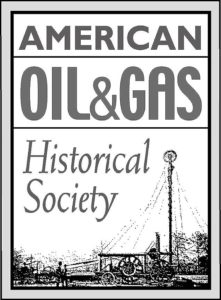by Bruce Wells | Dec 13, 2025 | Petroleum Companies
He was a controversial North Pole visitor whose fraudulent claims were part of failed oil company ventures, a mail fraud conviction, and jail time.
Arctic explorer Dr. Frederick Albert Cook in 1908 made the widely accepted claim to have reached the North Pole after an arduous journey. He became a celebrity after accounts of his feat appeared in newspapers. Cook’s near approach to the pole would be erased in less than a year when Admiral Robert E. Peary made a scientifically documented journey to achieve the milestone.
In 1909, a special commission at the University of Copenhagen investigated Cook’s conclusion that he had reached the pole before Peary. After examining Cook’s records, the commission on December 21, 1909, found no evidence Cook had reached the pole. The U.S. Congress formally recognized Peary’s claim in 1911.
(more…)
by Bruce Wells | Nov 26, 2025 | Petroleum Companies
The gas that would not burn — and the professor who in 1905 extracted helium from a natural gas well.
Drilling for natural gas in May 1903, an exploratory well drilled by Gas, Oil and Developing Company found natural gas beneath William Greenwell’s farm near Dexter, Kansas. The discovery came as the company drilled into a geologic formation that produced “a howling gasser” that would not burn.
(more…)
by Bruce Wells | Nov 7, 2025 | Petroleum Companies
New York, Manhattan, Metropolitan, Municipal, Knickerbocker and Harlem gas companies merged in 1884.
The history of Con Edison includes stories of work crews from New York City’s many competing gas companies digging up lines of rivals — and literally battling for customers, giving rise to the term “gas house gangs.” (more…)
by Bruce Wells | Oct 15, 2025 | Petroleum Companies
Hard lessons learned in the Wyoming Powder River Basin.
During World War I, the Winona Oil Corporation set up operations in Casper, Wyoming, with holdings of 1,200 acres of “selected land in the heart of Powder River.” The small, newly established exploration company reported having one drilling rig and another ready to be “rigged up” at another site.
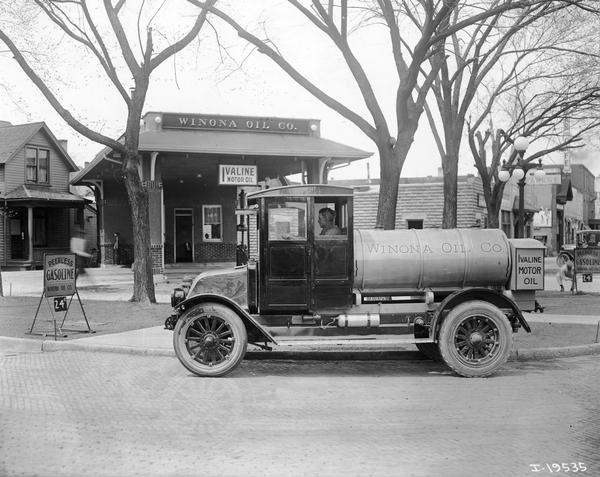
A Winona Oil Company station sold gasoline and and Ivaline Motor Oil, circa 1919. After months of difficult drilling, the company’s first exploratory well reached a depth of 700 feet without finding oil.
As the Powder River Basin attracted exploration companies, a 1918 discovery at a depth of about 2,600 feet by the Ohio Oil Company (later Marathon) would grow into the largest in the Rocky Mountains. Ohio Oil could afford drilling more productive wells a thousand feet deeper.
Along with earlier discoveries at Salt Creek (1908) and Big Muddy (1916), the Lance Creek field “brought an immediate boom and derricks sprang up everywhere,” according to the Niobrara Historical Society. The Basin’s abundant shale deposits also played a role.
With capitalization of $200,000, Winona Oil was considered a “poor boy” drilling venture dependent upon investors to fund continued drilling despite the risks. The company offered stock at 5 cents a share. Advertisements in the Ogden Standard enticed investors with “Winona Is Here to make Money, Money, Money.”

In February 1918, C. Kirchner, secretary of the Winona Oil, conducted a promotional demonstration of the reduction of shale oil to gas for about 50 onlookers. “This gas was lighted and burned during the entire experiment to such an extent that a couple of engineers in the party made the remark that the gas itself would furnish 90 percent of the fuel necessary for the original reduction,” it was later proclaimed.
This Winona Oil interest in shale oil did not develop, although other contemporary ventures did pursue it (see Ute Oil Company).
Powder River Oilfield
Winona Oil by 1919 had only been able to drill 700 feet in its first drilling effort somewhere “on the north side of the railroad.”

“Hocus Pocus-or-Common Sense?” Ivaline Motor Oil sales did not help the Winona Oil Company to survive its drilling ventures in the highly competitive oilfields of the Powder River Basin.
In March 1919, a trade magazine noted that “the Powder River Syndicate has undertaken to finish the well commenced by the Winona Oil Corporation at Powder River, Natrona Co., according to reports current in Casper.”
Another article in the Oil & Gas News added, “In the Powder River field, the Winona Oil Corporation has announced the purchase of a drilling machine which will be used to complete the company’s first well, which has been underway for months. The Winona claims to have solved all its difficulties and expects to go with its work without further delay.”
By the end of May, Winona Oil Company reportedly survived its financial difficulties and had reentered the field. Plans were by then underway to drill a second well.
Good news came the following month when the first well was described as “gassing heavily, and Casper people interested in the enterprise are very optimistic over the prospects,” the trade publication proclaimed, adding. “Should the well prove a good one, a large tract north of Powder River station would be added to the territory considered proven.”
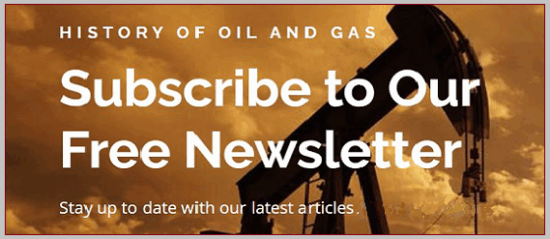
However, by August the good news had gone bad; the gasser well had to be abandoned, “as the hole was started with a casing too small to see it thoroughly.”
Powder River Syndicate
A second well was spudded by the Powder River Syndicate with Winona Oil a fifty-fifty partner. “The Winona Powder River Syndicate well No. 2, which was begun when the first hole pinched-out, is making 100 feet a day, according to reports from the field, and is down about 500 feet. This well is located north of Powder River, on Winona holdings,” noted the Oil & Gas News on September 4.
The publication reported bad news on January 29, 1920. “The Winona well at Powder River is also shut down, but it is claimed that drilling will resume in the spring,” the News noted. “This is the second well, the first having been lost on account of a bit wedged in the hole.”
Drilling did not resume in the spring or anytime thereafter. Despite the efforts of Winona Oil and the hopes of its investors, the independent exploration company did not survive. Cities Service Company bought Winona Oil and moved the Winona division to St. Paul, Minnesota.
More articles about small exploration and production companies attempting to join petroleum booms (and avoid busts) can be found in Is my Old Oil Stock worth Anything?
______________________
Recommended Reading: Black Gold, Patterns in the Development of Wyoming’s Oil Industry (1997); Trek of the Oil Finders: A History of Exploration for Petroleum (1975). Your Amazon purchase benefits the American Oil & Gas Historical Society. As an Amazon Associate, AOGHS earns a commission from qualifying purchases.
_______________________
The American Oil & Gas Historical Society (AOGHS) preserves U.S. petroleum history. Please become an annual AOGHS supporter and help maintain this energy education website and expand historical research. For more information, contact bawells@aoghs.org. Copyright © 2025 Bruce A. Wells. All rights reserved.
Citation Information – Article Title: “Winona Corporation.” Authors: B.A. Wells and K.L. Wells. Website Name: American Oil & Gas Historical Society. URL: https://aoghs.org/old-oil-stocks/winona-oil-corporation. Last Updated: October 18, 2025. Original Published Date: March 23, 2016.
by Bruce Wells | Sep 30, 2025 | Petroleum Companies
High hopes and investments end after one well in the Big Muddy.
In October 1917, Wyoming Peerless Oil Company stock promotions first appeared in the pages of the Cheyenne State Leader, Laramie Republican, and Wyoming Tribune newspapers.

Peerless Oil and other newly formed exploration companies promoted themselves with often exaggerated newspaper ads in the Milwaukee Journal, June 2, 1918.
Within a year the new exploration company’s advertisements appeared in newspapers as far away as Milwaukee, Wisconsin: “Action Not Promises Our Motto,” noted one from 1918 placed in the Milwaukee Journal.
Many U.S. newspapers at the time included similar promotions as oilfield discoveries proliferated from California to Kansas. Just a few years earlier, Col. William F. Cody had searched for Wyoming black gold (see Buffalo Bill Shoshone Oil Company).
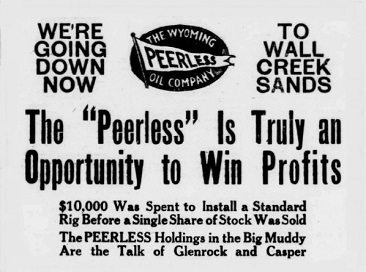
Another example of a Peerless Oil Company promotion of its Wyoming Big Muddy exploration effort.
Meanwhile, demand for gasoline had been growing since the first U.S. auto show in 1900. The Model T Fords and World War I, which the United States would soon join, resulted in a rapid proliferation of petroleum exploration companies.
Some of the startups used questionable claims to keep investors unaware of how risky and expensive the business of finding and producing oil truly was. Nine out of 10 exploratory well attempts proved to be dry holes — and petroleum exploration was expensive in such remote areas.
The Big Muddy
The Wyoming Peerless Oil Company set its sights on drilling a well six miles from the nearest producer in the Big Muddy oilfield east of Casper.
Peerless Oil stock was initially offered at three cents per share. “Don’t wait for our first well to come in. You might not be able to get this stock then for less than 25-cents or 50-cents per share.”
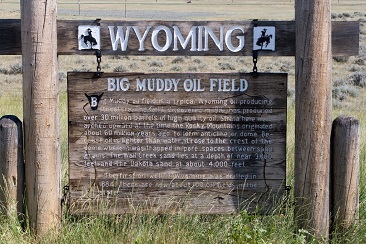
Many companies tried but failed to find petroleum wealth in the Big Muddy field.
The Big Muddy oilfield, located about four miles west of Glenrock in Converse County, was discovered in 1916, a discovery that touched off widespread drilling and brought about one of Wyoming’s famous oil booms. Today, a marker on the south side of Hwy. 230 at the junction with County Road 33 describes the historic field:
Big Muddy oil field is a typical Wyoming oil producing structure. The field, discovered in 1916, has produced over 30 million barrels of high quality oil.
Strata here were arched upward at the time the Rocky Mountains originated over 60 million years ago, to form anticline, or dome. Because oil is lighter than water, it rose to the crest of the dome where it was trapped in pore spaces between sand grains. The Wall Creek sand lies at a depth of near 3,000 feet and the Dakota sand at about 4,000 feet. The first oil well in Wyoming was drilled in 1884. There are now about 100 oil fields in the state.

The Big Muddy field in Converse County launched a drilling boom, notes a University of Wyoming’s 2019 article, Wyoming Energy History. “Claim jumpers entered the area, some only drilling at night and pretending to be construction workers on the site during the day,” the article reports, adding that 13 steam boilers were stolen — and cable-tools “lost” down holes (see Fishing in Petroleum Wells).
Peerless Oil
Seeking more investors, advertisements reported Wyoming Peerless Oil’s drilling progress on its Big Muddy exploratory well: Down 1,475 feet by June of 1918; down 1,675 feet by July and down to 3,315 feet by August of 1919.
Although rumors of a dry hole began to circulate, the company continued to solicit more investors to fund deeper drilling. But after reaching 4,050 feet without finding oil, company officer Charles Straub announced the well would be abandoned. If more funds could be secured, Wyoming Peerless Oil would drill a second well, Straub added.
“Efforts have been made to extend the limits of the (Big Muddy) field in every direction, but these efforts have all been failures, and the area of the field is plainly marked,” reported the Oil and Gas News (this would change in 1950 with a discovery to the east of the field).
By February 1920, stockholders from Denver had petitioned a court to put the Wyoming Peerless Oil Company into receivership, alleging mismanagement by Straub and other company officers. Straub responded with a $50,000 libel suit, reported by the Casper Daily Tribune on March 5, 1920. Wyoming Peerless Oil never drilled a second well, and the company disappeared from newspaper accounts.
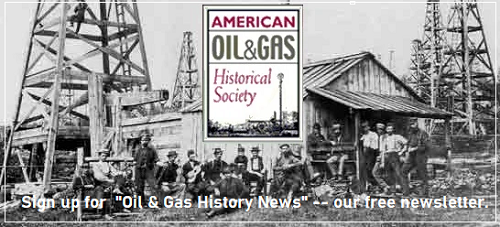
The first record of oil in Wyoming came in 1832. An expedition led by Captain B.L.E. Bonneville took the first wagons through South Pass. Fifty years later, prospector Mike Murphy bought an oil lease on the site of Capt. Bonneville’s “great tar spring” southeast of Lander.
Learn more in First Wyoming Oil Wells.
The stories of exploration and production companies joining petroleum booms (and avoiding busts) can be found updated in Is my Old Oil Stock worth Anything?
_______________________
Recommended Reading: William F. Cody’s Wyoming Empire: The Buffalo Bill Nobody Knows (2007); The Salt Creek Oil Field: Natrona County, Wyo., 1912 (reprint, 2017); Kettles and Crackers – A History of Wyoming Oil Refineries
(reprint, 2017); Kettles and Crackers – A History of Wyoming Oil Refineries (2016). Your Amazon purchases benefit the American Oil & Gas Historical Society. As an Amazon Associate, AOGHS earns a commission from qualifying purchases.
(2016). Your Amazon purchases benefit the American Oil & Gas Historical Society. As an Amazon Associate, AOGHS earns a commission from qualifying purchases.
_______________________
The American Oil & Gas Historical Society preserves U.S. petroleum history. Become an AOGHS annual supporter and help maintain this energy education website and expand historical research. For more information, contact bawells@aoghs.org. Copyright © 2025 Bruce A. Wells. All rights reserved.
Citation Information – Article Title: “Wyoming Peerless Oil Company.” Authors: B.A. Wells and K.L Wells. Website Name: American Oil & Gas Historical Society. URL: https://aoghs.org/oil-almanac/buffalo-bill-oil-company. Last Updated: October 1, 2025. Original Published Date: July 29, 2013.
by Bruce Wells | Sep 30, 2025 | Petroleum Companies
Wildly optimistic promotions during WW I and some drilling, but no gushers.
“Oil Excitement at Rocky Ford Field Near Sundance,” proclaimed a front page of the Moorcroft (Wyoming) Democrat on September 14, 1917, describing a “big drill” of the Wyoming-Dakota Company.
“Rocky Ford, the seat of the oil activities in Crook County is about the busiest place around,” the newspaper continued. “Cars come and go, people congregate, and the steady churning of the two big rigs continues perpetually.”
Not finished with its enthusiastic reporting, the Moorcroft Democrat noted: “Excitement has reached the zenith of tension, and with each gush of the precious fluid, oil stock climbs another notch. The big drill of the Wyoming-Dakota Co. has been pulled from their deep hole until spring. The drill reached 600 feet and was in oil.”
North Texas oilfield discoveries had made national headlines, adding to the excitement in Wyoming, where the giant Salt Creek-Midwest field was revealed in 1908. Even showman Col. William F. Cody would catch oil fever (see Buffalo Bill Shoshone Oil Company).
Wyoming-Dakota Oil
The Rapid City, South Dakota, petroleum exploration company Wyoming-Dakota Oil — reportedly having one producing well and three more drilling — was capitalized at $500,000 with a par value of 25 cents per share. All of its leases were in Crook County, including 3,200 acres in Lime Butte field, 10,000 acres in Rocky Ford field, and 4,000 acres in Poison Creek field.
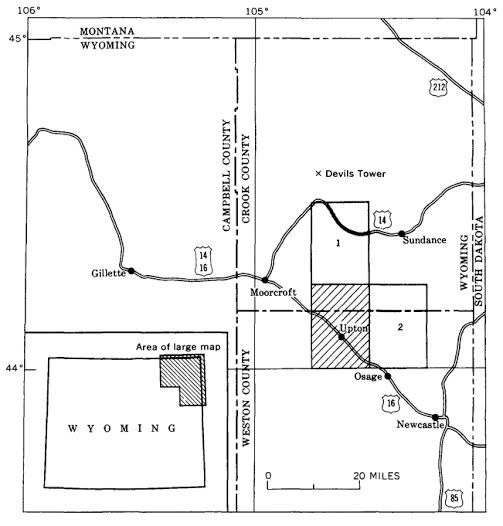 Since Wyoming would not pass its first “Blue Sky” law to prevent fraudulent promotions until 1919, Wyoming-Dakota Oil’s newspaper ads often rivaled patent medicine exaggerations. Potential investors were enticed with “Geologists claim this showing indicates alone 500,000 barrels to the acre” and “Your Chance Has Come if you want to make money in Oil.”
Since Wyoming would not pass its first “Blue Sky” law to prevent fraudulent promotions until 1919, Wyoming-Dakota Oil’s newspaper ads often rivaled patent medicine exaggerations. Potential investors were enticed with “Geologists claim this showing indicates alone 500,000 barrels to the acre” and “Your Chance Has Come if you want to make money in Oil.”
In Sioux Falls, South Dakota, the Sells Investment Company offered Wyoming-Dakota Oil Company stock reportedly after “a careful selection of conservative issues from among the thousand prospects, offering same to you before higher prices prevail or its present substantial position has been discounted by professional traders. A good clean cut speculation of this character may mean a fortune. Watch this company for sensational developments.”
The United States had entered World War I in April 1917; by November newspapers reported Francis Peabody, chairman of the Coal Committee of the Council of National Defense, was telling the U.S. Senate Public Lands Committee that the country was not producing enough oil to win the war.
“He said if nothing were done to develop new wells the reserve supply would be exhausted in twelve months and production would be 50,000,000 barrels less than requirements,” one newspaper noted. Wyoming-Dakota Oil Company executives took advantage of the opportunity while more Texas discoveries like “Roaring Ranger” made headlines.

“The (war) situation outlined leads us to suggest that you investigate Wyoming-Dakota Oil. ‘We are doing our bit’ by drilling night and day. Ours is an investment worth while. The allotment of Treasury stock at 25 cents is almost sold out and the Directors will advance the price of stock to 50 cents a share (100 per cent on your present investment) on December 15th, 1917.”
The Wyoming-Dakota Oil promotion continued: “By that time our newspaper announcement in the Eastern cities, pointing out the enormous acreage, present production and negotiations for additional valuable holdings will be made known to millions of seasoned investors in New York, Philadelphia, Chicago, Boston and Pittsburgh. We feel confident this will result in a demand for this stock that will send the present market price skyward. We trust you will see the wisdom of prompt action before all available stock at 25 cents per share has been purchased by other investors.”
In early 1918, Wyoming-Dakota Oil Company had drilled wells in the Upton-Thornton oilfield and was “holding out high hope of bringing in a gusher in a few days.” In July, the Laramie Daily Boomerang reported the company had “two rigs going steadily in Crook County’s Rocky Ford field” — but no oil gushers.
Growing investor pessimism was reflected in Wyoming-Dakota Oil Company’s stock prices, which fell in over-the-counter markets from 75 cents bid in June 1919 to 50 cents bid at the end of September. By March 1920, brokers offered 5,000 shares or any part thereof at 5 cents a share.

A final blow to the company was reported in the Laramie Republican of July 25, 1921: “Wyoming-Dakota…has completed pulling the casing from the well which it has been drilling north of town, after having struck a formation said to be granite, at a depth of 715 feet.”
The Laramie newspaper remained optimistic. “While this has a tendency to retard the activities of other interests, it is by no means stopping them entirely and it is to be hoped that another well will be started this summer.”
That did not happen. Reports on Wyoming-Dakota Oil Company disappeared for the next 24 years, until a court summons was published in the January 25, 1945, Sundance (Wyoming) Times.
The summons said Wyoming-Dakota Oil — address or place of residence to plaintiff unknown — was being sued in the Sixth District Court of Wyoming. The exploration company then faded into history; its stock certificates valued only by scripophily collectors.
_______________________

_______________________
The American Oil & Gas Historical Society (AOGHS) preserves U.S. petroleum history. Please become an AOGHS annual supporter and help maintain this energy education website and expand historical research. For more information, contact bawells@aoghs.org. Copyright © 2025 Bruce A. Wells.
Citation Information: Article Title – “Wyoming-Dakota Company” Authors: B.A. Wells and K.L. Wells. Website Name: American Oil & Gas Historical Society. URL https://aoghs.org/old-oil-stocks/wyoming-dakota-oil-company. Last Updated: March 31, 2025. Original Published Date: January 14, 2016.











